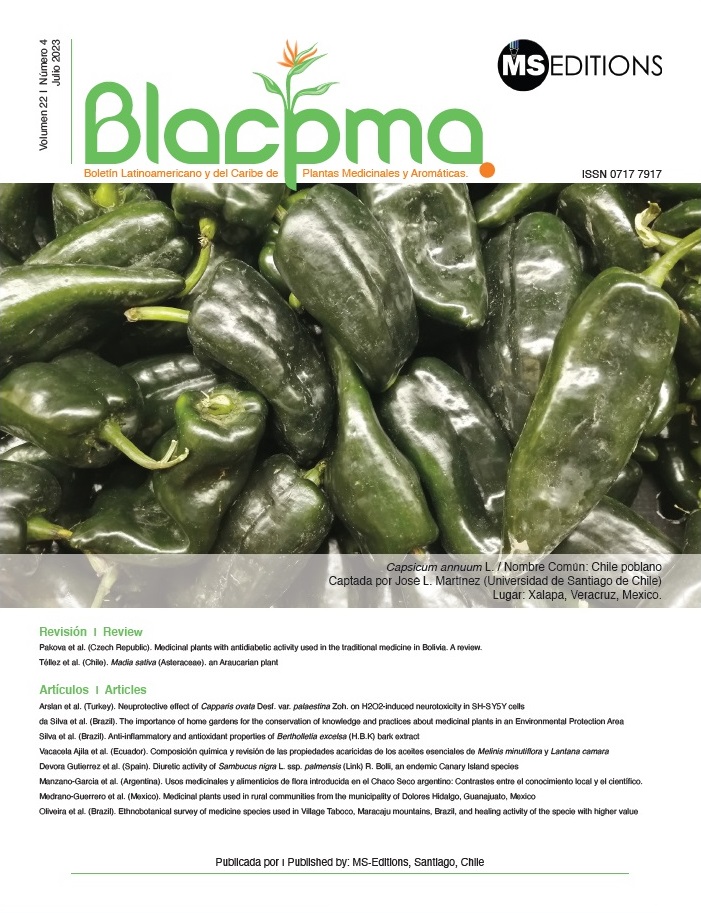Medicinal plants used in rural communities from the municipality of Dolores Hidalgo, Guanajuato, Mexico
DOI:
https://doi.org/10.37360/blacpma.23.22.4.39Keywords:
Ethnobotany, Traditional knowledge, Mexican traditional medicine, Medicinal plants, Informant consensus factorAbstract
This study recorded the use of medicinal plants in the rural communities from the municipality of Dolores Hidalgo, Guanajuato, Mexico. Data were obtained through open semi-structured interviews with local respondents (n=181), and medicinal plants were recorded and identified in herbariums. The Relative importance (RI) and Informant Consensus Factor (ICF) were calculated to analyze the survey data. In total, 68 plant species belonging to 33 families were reported. Asteraceae had the highest number of species, representing 14. The highest RI was accounted by Chamaemelum nobile (RI = 2.0), followed by Thymus vulgaris (RI = 1.83), and Moringa oleifera (RI = 1.60). The highest ICF was reported by diseases associated with the respiratory (ICF = 0.80), digestive (ICF = 0.75), and musculoskeletal systems including connective tissues (ICF = 0.71). Respondents have knowledge about medicinal plant use for primary health care and other chronic diseases. The information obtained here could be extrapolated to different rural areas in Mexico.
Downloads
Downloads
Published
How to Cite
Issue
Section
License

This work is licensed under a Creative Commons Attribution-NonCommercial-NoDerivatives 4.0 International License.

